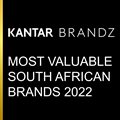Names matter. They are an integral part of our identities. That goes for brand names too. Brand names serve as heuristics that trigger all of the associations we’ve built up over time in an instant, thereby simplifying our decision-making process. Or they are supposed to.
Much as we call each other by our first names or nicknames, people simplify how they engage with brands. They drink Nescafé, Savanna and Castle. They drive in their Mercs or Beamers to shop at Woolies. They meet on Teams. They party with Tassies and Klippies. They take it even further and use brand names generically to describe an entire category – they write Jik on their shopping list when they put the store’s own brand in their basket. We, as marketers, do our best to remind consumers to buy Nescafé Gold, Nescafé Classic, Savanna Dry, Savanna Light, Savanna Angry Lemon, Savanna Chilled Chilli, Castle Lager, Castle Light, Castle Free, and the real Jik. All on a shoestring budget.
At the same time brands are becoming more complex. Kantar BrandZ analysis shows that brands reliant on only one category or market have the greatest risk profiles. By contrast, brands that have diversified into multiple categories not only show faster brand growth but also have a better chance of above-average growth. The obvious example is Amazon, which operates in 15 product and service categories, having grown from a bookstore into an ecosystem that is all interconnected and touches multiple parts of people’s lives. Closer to home, Discovery expanded from medical aid to insurance, credit cards, and banking. Retailers Clicks and Checkers have launched Clicks Baby, Checkers Sixty60 and Checkers Little Me.

As brands expand, adding products and services and extending into other categories, they gradually become a multi-layered mix of master brands, sub-brands, and variants. Because we work so closely with all of our brands, it is often difficult for us to realise how confusing this can be to consumers. The number of brands increased by a staggering 30% between 2008 and 2018. However, brand awareness grew by only 4%, which shows that people are running out of bandwidth. Can we take a step back and simplify things?
A good starting point is to clarify and describe the relationship between the master brand and sub-brands for ourselves. Most marketers know David Aaker’s Brand Relationship Spectrum, which sets out the concept of brand architecture: the ecosystem within a brand. It is composed of four basic strategies. If the master brand runs the show, we’re talking Branded House (think BMW). If the master brand takes a back seat and is not used in branding in an obvious way, we’re talking House of Brands, for example P&G. House of Brands consumers are often unaware that the brands are even connected or owned by the master brand. These are the easy and obvious extremes.
BrandingKantar 3 Aug 2022
It gets a little trickier in-between. Sub-brands sit closer to Branded House. They are extensions of the master brand and are codrivers of brand equity, like Apple iPhone. Endorsed brands sit closer to House of Brands, while the master brand makes an appearance in the form of quality assurance or a stamp of approval, like the Nestlé halo hovering over KitKat. To confuse matters more, we have recently seen House of Brands companies like Unilever shedding their wallflower status and starting to become more prominent.
Although this may seem basic, it can help us decide where we need to put our focus in terms of investment, brand narrative, positioning, and communications budget when it comes to building equity. In a Branded House it is typically the master brand that carries the narrative. When you introduce sub-brands, they share this role with the master brand. For endorsed brands the focus again shifts to building equity for the endorsed brand.
It is easy to see why master brand strategies are growing in popularity and why Coca-Cola and Hershey’s have switched to a Branded House strategy. The main benefit from a marketing perspective is more efficient marketing spend. By focussing on the master brand, a brand can gain clarity of association by not diluting marketing efforts and resources.
Some marketers hang their hopes on the halo effect of the master brand transferring associations to sub-brands and variants, without showing or telling consumers what they stand for. Kantar analysis has shown that halo effects from advertising are not guaranteed – half the examples of variant advertising showed no image shifts from halo effects. Why should the consumer care about how you organise your internal brand ecosystem? Irrespective of how you define those interrelationships, people need a reason to believe and buy. You need to clarify why the brand is different and relevant to the consumer.
To get back to where we started: ensure people know your name, identity and what you stand for. Your brand name is competing in a cluttered, fast-paced environment, in which people hardly have the bandwidth to remember their children’s names and end up calling them Sweetie and Darling. What will consumers call you, and what will it say about their relationship with you?
BrandingKantar 31 May 2022
Kantar helps our clients build valuable brand ecosystems. Talk to us about brand architecture optimisation and purposeful positioning for your brands.
This article was first published in the 2022 Kantar BrandZ Most Valuable South African Brands report. Find out more here.
Join the conversation, follow us on LinkedIn and Twitter for our latest insights to help you understand people and inspire growth.
